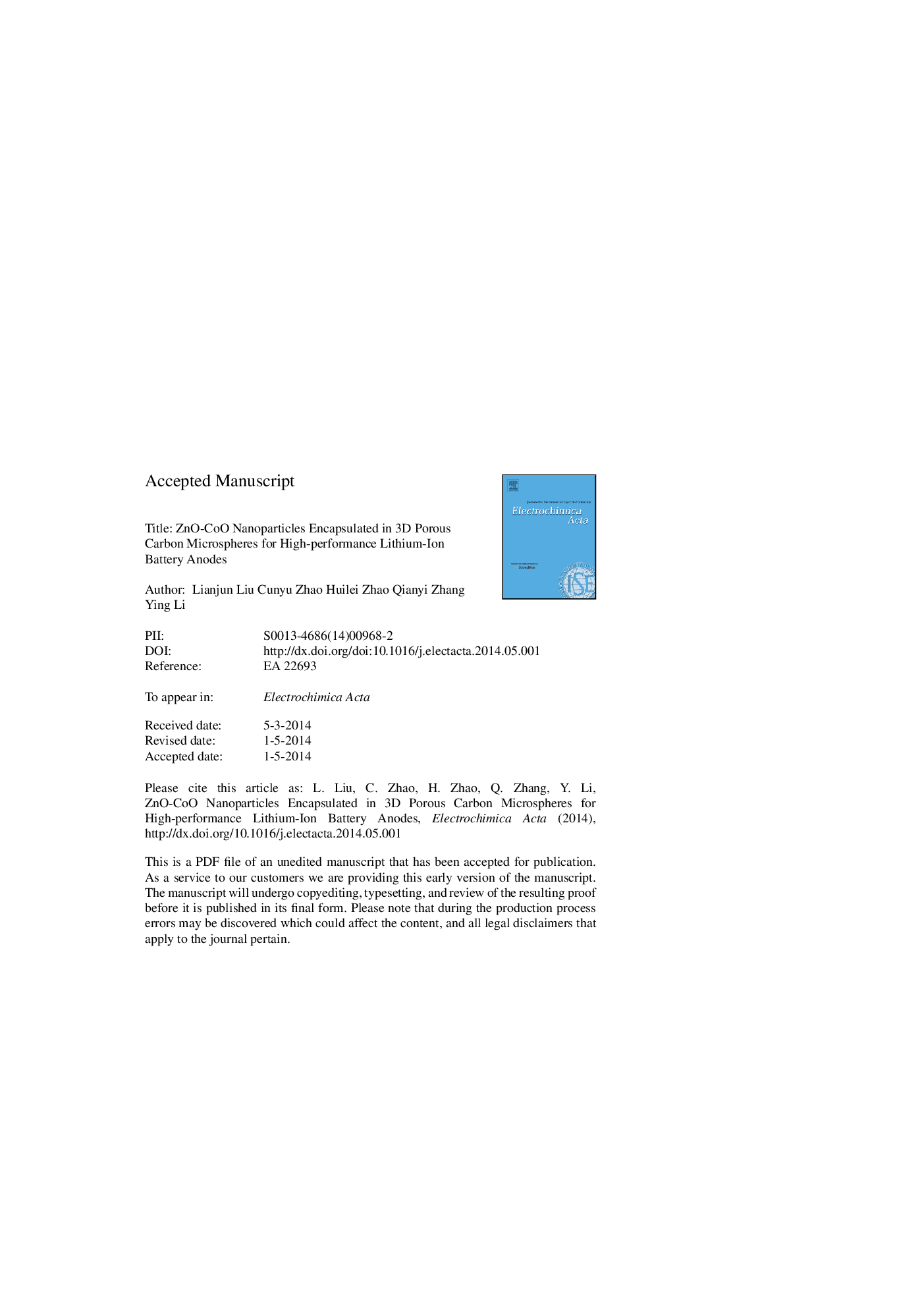| Article ID | Journal | Published Year | Pages | File Type |
|---|---|---|---|---|
| 6613484 | Electrochimica Acta | 2014 | 26 Pages |
Abstract
In this paper we report a novel architecture of hierarchical 3D porous carbon microspheres (PCM) to encapsulate ZnO-CoO nanoparticles that serves as an advanced anode for high-performance lithium-ion battery (LIB). The PCM is fabricated by a facile aerosol spray pyrolysis method, and ZnO-CoO composite nanoparticles are infiltrated into the PCM by a simple one-pot hydrothermal procedure (i.e., ZnO-CoO@PCM). The developed hybrid material provides several advantages: (1) partial replacement of CoO with ZnO to offer a low-cost and eco-friendly candidate anode, (2) a continuous and large surface area (1236 m2Â gâ1) carbon network for improved electrical conductivity and uniform dispersion of ZnO-CoO nanoparticles, and (3) porous structure for good electrolyte diffusion and fast Li-ion transport and to buffer the large volume expansion of the metal oxides. As a result, this new ZnO-CoO@PCM nanocomposite demonstrates a higher reversible capacity (1250 mAh gâ1 after 150 cycles at a current density of 100Â mAÂ gâ1), more excellent cycling stability, and better rate capability than a ZnO-CoO/PCM mixture and than a non-porous ZnO-CoO/carbon black mixture. The 3D porous nanocomposite architecture in this work could shed light on the design and synthesis of other metal oxides electrodes for energy storage.
Related Topics
Physical Sciences and Engineering
Chemical Engineering
Chemical Engineering (General)
Authors
Lianjun Liu, Cunyu Zhao, Huilei Zhao, Qianyi Zhang, Ying Li,
